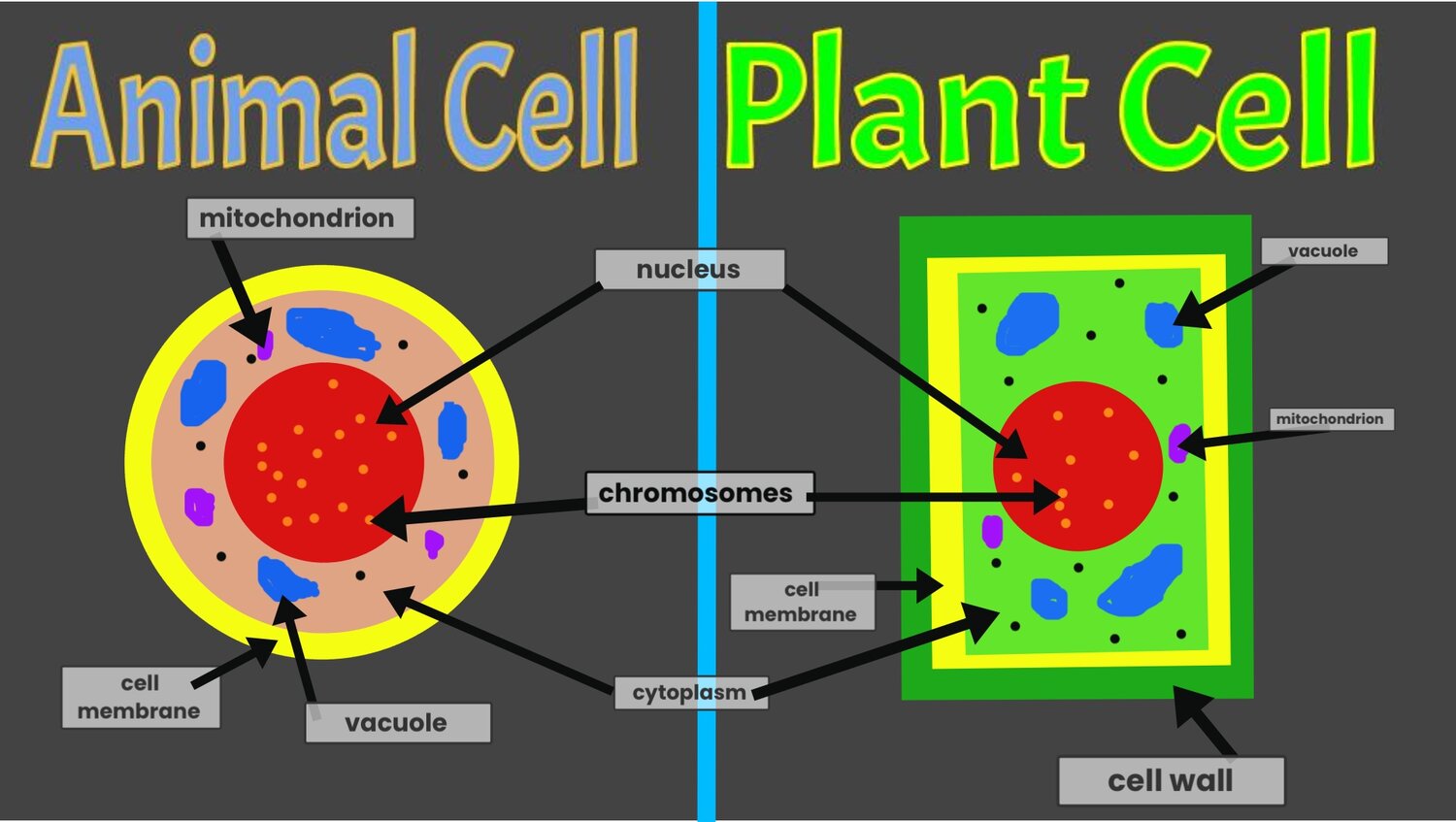Your What do eukaryotic cells look like images are ready. What do eukaryotic cells look like are a topic that is being searched for and liked by netizens now. You can Download the What do eukaryotic cells look like files here. Get all royalty-free vectors.
If you’re searching for what do eukaryotic cells look like images information linked to the what do eukaryotic cells look like interest, you have visit the right site. Our website frequently gives you hints for seeing the highest quality video and image content, please kindly search and find more informative video content and images that match your interests.
What Do Eukaryotic Cells Look Like. What does a eukaryotic animal cell look like. The primary distinction between these two types of organisms is that eukaryotic cells have a membrane-bound nucleus and prokaryotic cells do. Eukaryotes can be single-celled or multi-celled such as you me plants fungi and insects. When putting cells into categories scientists can tell eukaryotic cells apart from prokaryotic cells because they look different.
 There Are More I Dislike On The Acceptable Pet Names Side Than The Other This Is Suc Cute Names For Girlfriend Cute Names For Boyfriend Names For Girlfriend From pinterest.com
There Are More I Dislike On The Acceptable Pet Names Side Than The Other This Is Suc Cute Names For Girlfriend Cute Names For Boyfriend Names For Girlfriend From pinterest.com
The nucleus houses the cells DNA and directs the synthesis of proteins and ribosomes. Consist of protists algae plant and animal cells. What do all eukaryotes have in common. Eukaryotic cells are very diverse in shape form and function. What do cells look like. These include a plasma cell membrane a nucleus mitochondria internal membrane bound organelles and a cytoskeleton.
The primary distinction between these two types of organisms is that eukaryotic cells have a membrane-bound nucleus and prokaryotic cells do.
Eukaryotic cells are very diverse in shape form and function. Their genetic material is a small simple circle called a nucleoid. Eukaryotic cells are larger than prokaryotic cells and have a true nucleus membrane-bound organelles and rod-shaped chromosomes. BIO dot EDU. Some of the sallestm are one-celled bacteria which are too small to see with the naked eye at 1-millionth of a meter micrometer across. Eukaryotic cells are found in plants animals fungi and protists.
 Source: pinterest.com
Source: pinterest.com
Eukaryotic cells contain membrane-bound organelles including a nucleus. These include a plasma cell membrane a nucleus mitochondria internal membrane bound organelles and a cytoskeleton. They are classified under the kingdom Eukaryota. Like eukaryotes prokaryotes do have a cell wall a plasma membrane and cytoplasm. Some internal and external features however are common to all.
 Source: pinterest.com
Source: pinterest.com
All bacteria are prokaryotes. They generally have a nucleus an organelle surrounded by a membrane called the nuclear envelope where DNA is. There are many different types of cells of various sizes and shapes but many share the same backbone and main components. The ciliary or flagellar movement and the amoeboid movementCilia and flagella of eukaryotic cells are cylindrical organelles which when animated propagate waves resulting in the movement of the cells which are free to move. A look at animal and plant cells 1.
 Source: pinterest.com
Source: pinterest.com
All bacteria are prokaryotes. What do cells look like. They are classified under the kingdom Eukaryota. Look for the presence of ribosomes. Plants have some of the largest cells 1 0100 micrometers.
 Source: pinterest.com
Source: pinterest.com
Which organelles can be seen with a light microscope. Eukaryotic cells contain membrane-bound organelles including a nucleus. There are two types of people And you think of yourself Oh boy here it is Because reducing all humanity to two types of people seems to be an odious activity in bestbut what if I told you that there are only two types of organisms. Organelle literally means little organ and like organs organelles perform specific. Eukaryotic cells can be individual unicellular organisms but they can also associate to form multicellular organisms.
 Source: pinterest.com
Source: pinterest.com
A eukaryotic cell is a cell whose intracellular components are organized into membrane-bound organelles. Cell locomotion depends on two principal types of movement. They are usually shaped like boxes surrounded by a thick barrier called the cell wall. They have a variety of internal membrane-bound structures called organelles and a cytoskeleton composed of microtubules microfilaments and intermediate filaments which play an important role in defining the cells organization and shape. What does a eukaryotic cell contain.
 Source: pinterest.com
Source: pinterest.com
Eukaryotic cells are very diverse in shape form and function. Eukaryotic cells contain membrane-bound organelles including a nucleus. Eukaryotic cells are larger than prokaryotic cells and have a true nucleus membrane-bound organelles and rod-shaped chromosomes. Bacteria are an example of prokaryotes. What do cells look like.
 Source: pinterest.com
Source: pinterest.com
What is difference between prokaryotic and eukaryotic cells. Cells come in different shapesround flat long star-like cubed and even shapeless. What does a eukaryotic cell contain. Eukaryotic cells like plant or animal cells contain membrane-bound organelles which are complex structures with specific functions essential for the cell much like the organs in our bodies. Organelle literally means little organ and like organs organelles perform specific.
 Source: pinterest.com
Source: pinterest.com
Eukaryotic cells are typically much larger than those of prokaryotes having a volume of around 10000 times greater than the prokaryotic cell. Some cells like plant and algal cells have a polysaccharide cell wall made of cellulose and chitin respectively. Look for the presence of ribosomes. And they have a number of. Eukaryotic cells have a nucleus enclosed within the nuclear membrane and form large and complex organisms.
 Source: pinterest.com
Source: pinterest.com
Like eukaryotes prokaryotes do have a cell wall a plasma membrane and cytoplasm. They have a variety of internal membrane-bound structures called organelles and a cytoskeleton composed of microtubules microfilaments and intermediate filaments which play an important role in defining the cells organization and shape. Eukaryotic cells contain membrane-bound organelles including a nucleus. All bacteria are prokaryotes. Cells come in different shapesround flat long star-like cubed and even shapeless.
 Source: pinterest.com
Source: pinterest.com
Look for the presence of ribosomes. Their genetic material is a small simple circle called a nucleoid. Eukaryotic cells are very diverse in shape form and function. Eukaryotic cells are typically much larger than those of prokaryotes having a volume of around 10000 times greater than the prokaryotic cell. Plants have some of the largest cells 1 0100 micrometers.
 Source: pinterest.com
Source: pinterest.com
These include a plasma cell membrane a nucleus mitochondria internal membrane bound organelles and a cytoskeleton. When putting cells into categories scientists can tell eukaryotic cells apart from prokaryotic cells because they look different. The nucleus houses the cells DNA and directs the synthesis of proteins and ribosomes. A look at animal and plant cells 1. Eukaryotic cells are very diverse in shape form and function.
 Source: pinterest.com
Source: pinterest.com
Eukaryotes can be single-celled or multi-celled such as you me plants fungi and insects. Some cells like plant and algal cells have a polysaccharide cell wall made of cellulose and chitin respectively. Plants have some of the largest cells 1 0100 micrometers. Prokaryotic cells do not contain a nucleus or. Eukaryotic cells are typically larger than prokaryotic cells ranging from around 10 to 100 μm in diameter.
 Source: pinterest.com
Source: pinterest.com
The study of prokaryotic cells involves the study of bacteria single cells that can be as tiny as two microns and look like dots under a compound microscope. Prokaryotic cells do not contain a nucleus or. Eukaryotic cells can be individual unicellular organisms but they can also associate to form multicellular organisms. Plant and animal cells are eukaryotic meaning that they have nuclei Eukaryotic cells are found in plants animals fungi and protists. These include a plasma cell membrane a nucleus mitochondria internal membrane bound organelles and a cytoskeleton.
 Source: pinterest.com
Source: pinterest.com
They also have giant water storage tanks called vacuoles that help plants stand up straight. According to scientists the world is divided into. Some internal and external features however are common to all. Look for the presence of ribosomes. They generally have a nucleusan organelle surrounded by a membrane called the nuclear envelopewhere DNA is stored.
 Source: pinterest.com
Source: pinterest.com
There are many different types of cells of various sizes and shapes but many share the same backbone and main components. Look for the presence of ribosomes. Protozoa fungi plants and animals all have eukaryotic cells. Eukaryotic cells are very diverse in shape form and function. The nucleus houses the cells DNA and directs the synthesis of proteins and ribosomes.
 Source: pinterest.com
Source: pinterest.com
When putting cells into categories scientists can tell eukaryotic cells apart from prokaryotic cells because they look different. Their genetic material is a small simple circle called a nucleoid. Plants have some of the largest cells 1 0100 micrometers. Like eukaryotes prokaryotes do have a cell wall a plasma membrane and cytoplasm. Human cells are eukaryotic cells.
 Source: pinterest.com
Source: pinterest.com
BIO dot EDU. A look at animal and plant cells 1. What are the characteristics of eukaryotic cells. How Do Eukaryotic Cells Move. Plant and animal cells are eukaryotic meaning that they have nuclei Eukaryotic cells are found in plants animals fungi and protists.
 Source: pinterest.com
Source: pinterest.com
Their genetic material is a small simple circle called a nucleoid. BIO dot EDU. Their genetic material is a small simple circle called a nucleoid. Eukaryotic cells are very diverse in shape form and function. Some internal and external features however are common to all.
This site is an open community for users to do sharing their favorite wallpapers on the internet, all images or pictures in this website are for personal wallpaper use only, it is stricly prohibited to use this wallpaper for commercial purposes, if you are the author and find this image is shared without your permission, please kindly raise a DMCA report to Us.
If you find this site serviceableness, please support us by sharing this posts to your preference social media accounts like Facebook, Instagram and so on or you can also save this blog page with the title what do eukaryotic cells look like by using Ctrl + D for devices a laptop with a Windows operating system or Command + D for laptops with an Apple operating system. If you use a smartphone, you can also use the drawer menu of the browser you are using. Whether it’s a Windows, Mac, iOS or Android operating system, you will still be able to bookmark this website.






